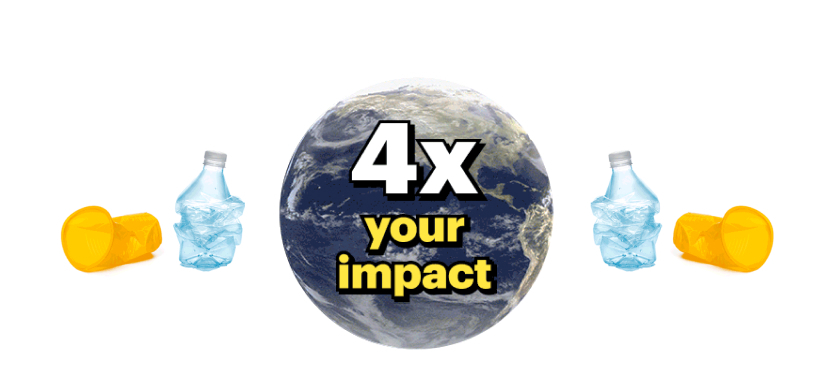How Chemical Makers Hid the Truth About PFAS
Published Nov 8, 2023

PFAS makers have long-known the potential harms of their product. But they’ve hidden behind weak regulations and are now pushing to sway new policy.
This is the second installment of our series on “PFAS & the Chemistry of Concealment.” Read our first piece on industry efforts to sway lawmakers on PFAS, and get the full report here.
Daily modern life has become a parade of mystery chemicals. From the clothes we put on our bodies to the sprays we clean our homes with, we trust that someone, somewhere, has made sure they’re actually safe.
But for a growing class of chemicals, we’re learning that’s not the case. Weak regulations, lack of research, and corporate coverups have let PFAS “forever chemicals” flood every corner of our lives.
PFAS (per- and polyfluoroalkyl substances) are a class of chemicals that don’t degrade naturally, earning them the nickname “forever chemicals.” Researchers have linked them to illnesses throughout the body, even at tiny exposures. They’ve contaminated our homes, food, and water for decades. And today, we face ballooning monitoring, clean-up, and related healthcare costs.
But it didn’t have to be this way. Chemical giants knew about the risks of PFAS for decades, yet continued to make and profit from them anyway. What’s more, they obscured their own science and took advantage of weak regulations.
Chemical Companies Made PFAS While Knowing the Risks
Chemical giant DuPont began making the first PFAS in the 1940s. Commonly known as Teflon, it made its way onto pots, pans, and other products that soon entered homes across the country. Teflon was eventually followed by a litany of other PFAS.
But while chemical companies were raking in profits, they were also gathering — and hiding — a growing body of evidence linking their products to dire health problems.
By the 1990s, PFAS were lucrative — and everywhere. Yet most people didn’t even know what “PFAS” were. That changed when a West Virginia farmer approached a lawyer and family friend with a case. His cows were dying of horrific illnesses, and he suspected it had to do with the nearby DuPont factory located upstream from his farm.
The lawyer, Robert Bilott, took on the case, and he uncovered a treasure trove of DuPont’s internal documents. These documents detailed just how much the company knew about the chemical it was making. And as a result of what Bilott uncovered, the Environmental Protection Agency (EPA) fined DuPont for failing to report the evidence of harm the company had found.
This put PFAS in the national spotlight. More suits alleging harm from companies making and using PFAS flooded in. Chemical companies now face thousands of PFAS lawsuits from states, municipalities, and individuals.
Weak Regulations Helped to Slow the Fight Against PFAS
While the bad press drove some companies to stop making and using some PFAS, the contamination crisis is continuing to grow. That’s partly because of PFAS’s persistence in the environment, the many, many different kinds, and the weaknesses of U.S. chemical regulations.
When one PFAS came under scrutiny, companies created new ones that they claimed were safer, but were still chemically similar. We now have thousands of PFAS that need investigation.
This “whack-a-mole” approach is baked into our chemical regulations, which treat chemicals as innocent until proven guilty. As a result, thousands of chemicals that haven’t even been tested for toxicity have entered the market. When the EPA does test and regulate chemicals, it does so one by one, in a years-long process.
Now, as support for regulating PFAS grows, the EPA faces three major barriers:
- The EPA lacks a clear, inclusive definition of what PFAS even are. Its current definition could be excluding thousands of PFAS currently made and used in the U.S., which then excludes them from regulation.
- The EPA doesn’t have enough data on PFAS’s toxic effects or how much is getting into the environment. Moreover, loopholes have allowed companies to get away with not reporting many discharges, even when there are requirements to do so.
- The chemical industry has a huge influence on the EPA. A revolving door between the chemical industry and federal regulators has been the status quo for years. Chemical consultants and executives become regulators and vice-versa.
We’re at the Beginning — but Far From the End — of Holding Chemical Companies Accountable
Starting in 2019, we’ve seen a flurry of efforts to legislate and regulate PFAS. And now that chemical companies can no longer hide their research, they’re trying to influence elected officials.
Our recent report shows the potential extent of these efforts. We’ve traced the millions of dollars that chemical companies, their supportive trade groups, and industries impacted by PFAS are spending to sway the course of lawmaking.
Get all the details in our report, “PFAS & the Chemistry of Concealment.”
Meanwhile, lawsuits continue to pile up. In June of this year, 3M agreed to pay hundreds of municipal water systems around the country $10.3 billion for PFAS clean-up.
But that pales in comparison to the immeasurable cost of harms PFAS have inflicted nationwide. Those include an estimated $5.5 to $63 billion in healthcare costs from PFAS-related illnesses each year in the U.S. At the same time, many lawsuits will end in undervalued settlements, and chemical companies have not admitted any fault in the crisis.
We can’t let companies worm their way out of full accountability — nor can we let their lobbying efforts deter our government from passing the policies we need.
To fully address the PFAS public health crisis, we need to regulate PFAS as a class of chemicals. We need to hold polluters accountable to pay for clean-up. We need to ban non-essential uses and eliminate all PFAS in our drinking water. And we need funding to lift the burden of clean-up and prevention from communities.
Corporations have kept us in the dark and profited from the spread of these harmful chemicals for too long. We need and deserve a safe environment, free from the danger of forever chemicals.
Help us hold polluters accountable! Tell your representatives to pass strong PFAS regulations with polluter-pays principles.

Time to face it —~it’s people or plastics.~We can’t have both.
Become a plastic pollution fighter this Earth~ Day and have your gift MATCHED $3-to-$1!
Enjoyed this article?
Sign up for updates.
TO TOP


